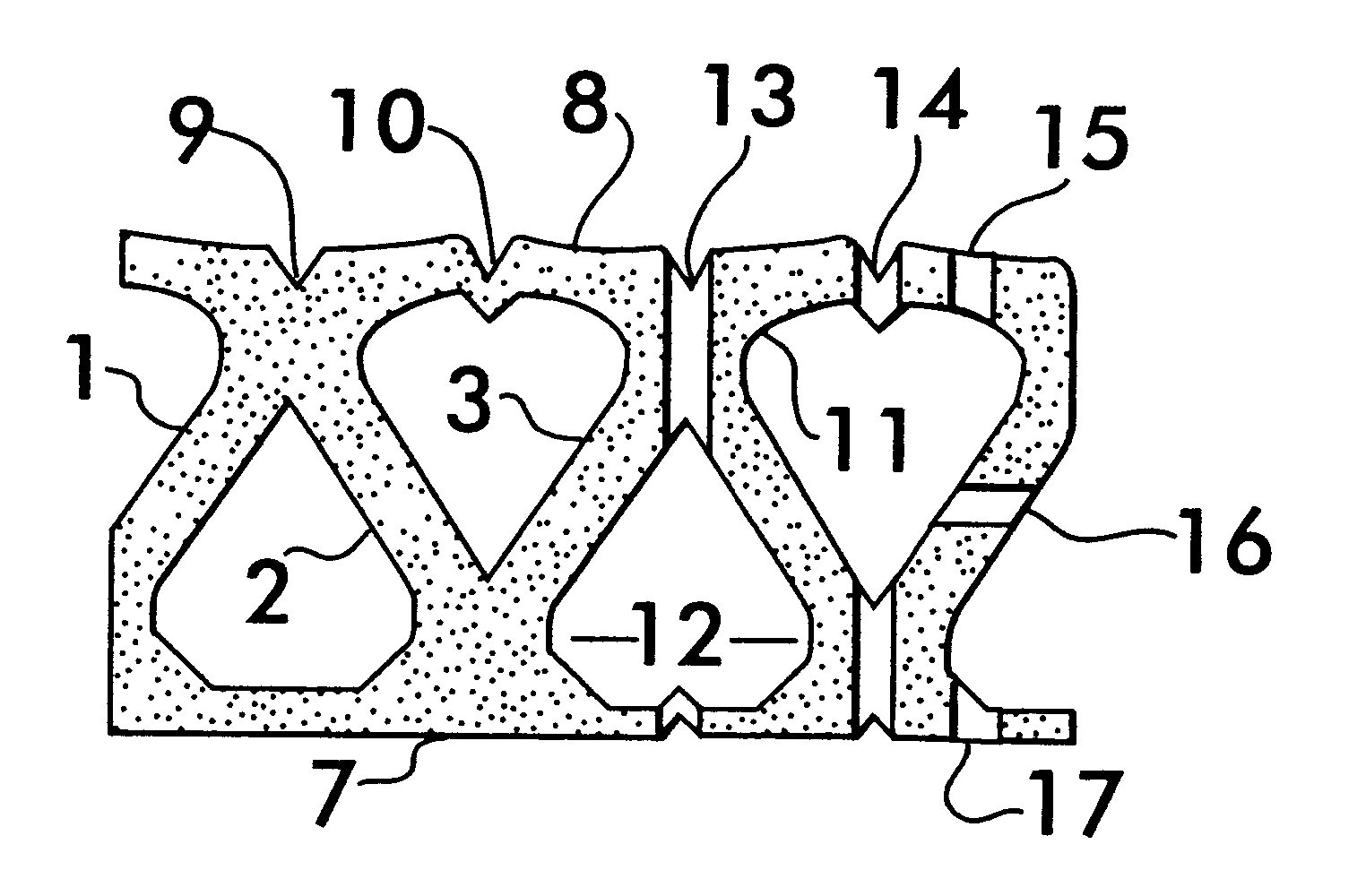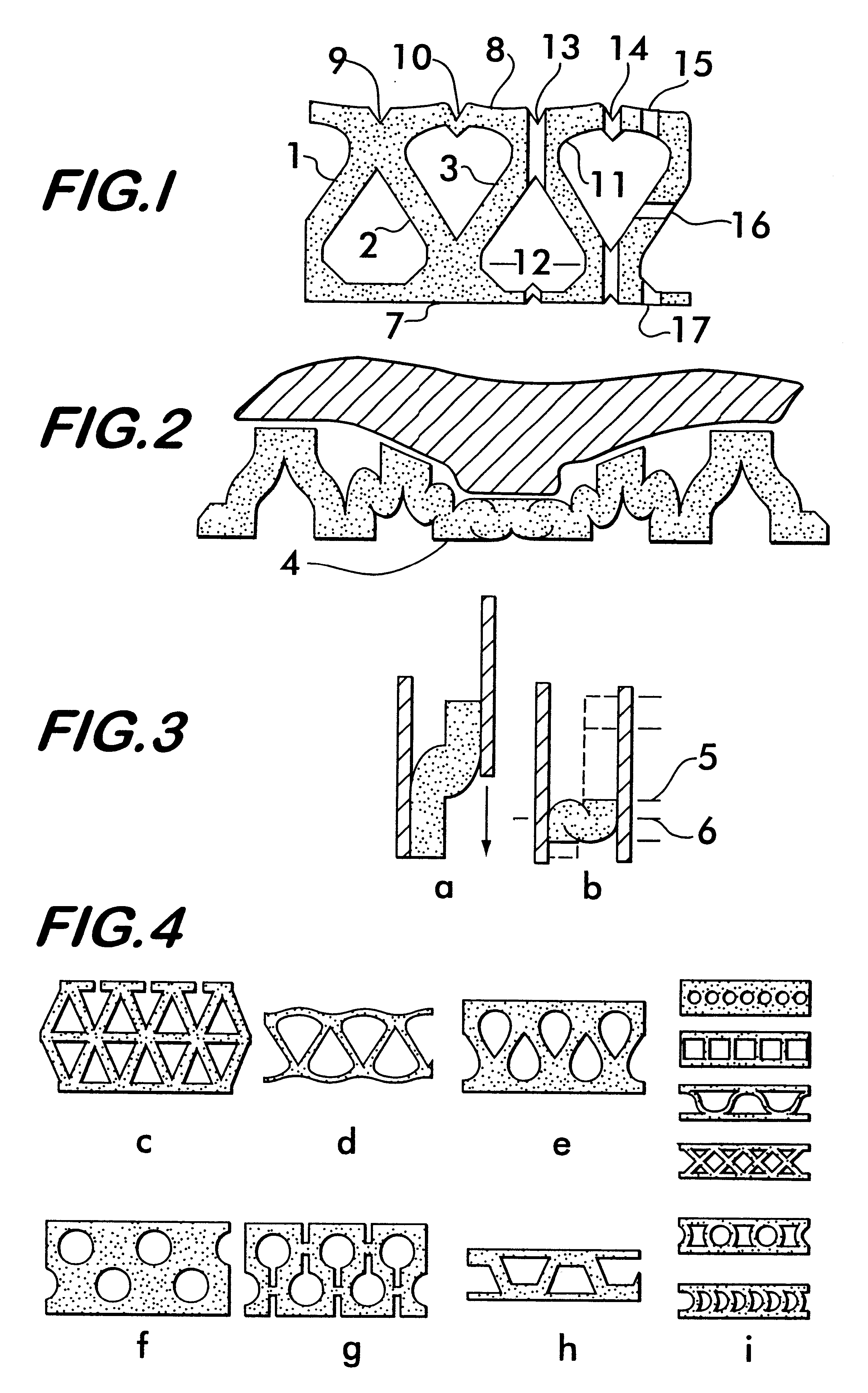Macrocellular cushion and folding elastomer truss
a technology of elastomer trusses and macrocellular cushions, which is applied in the field of macrocellular cushions and folding elastomer trusses, can solve the problems of reducing affecting the quality of the cushion, so as to reduce the effective buckling length of support members, prevent unnecessary outward (lateral) buckling, and high initial support
- Summary
- Abstract
- Description
- Claims
- Application Information
AI Technical Summary
Benefits of technology
Problems solved by technology
Method used
Image
Examples
Embodiment Construction
This preferred embodiment entails a roughly plainer lightweight resilient closed cell foam with an extruded truss type cross section (FIG. 1). Cushioning is achieved through a series of support elements (1, 2, 3) which provide efficient structural support but which collapse with decreasing structural efficiency.
Body regions requiring excess force are supported as the cushion "bottoms out" (4) or alternatively by preventing bottoming out with sufficient support force and depth using sufficiently thick support elements and sufficient number and scale of cushion layers. Body regions requiring "Lesser force" are supported as the body simply rests on the surface. Additional traditional padding may be added to the support surface to adjust initial surface support, comfort and moisture properties.
The support members are joined for a length at their ends (from 5 to 6) or may be considered to be shorter but raised on a platform (7) each having the effect of buttressing the folding support el...
PUM
| Property | Measurement | Unit |
|---|---|---|
| area | aaaaa | aaaaa |
| forces | aaaaa | aaaaa |
| force | aaaaa | aaaaa |
Abstract
Description
Claims
Application Information
 Login to View More
Login to View More - R&D
- Intellectual Property
- Life Sciences
- Materials
- Tech Scout
- Unparalleled Data Quality
- Higher Quality Content
- 60% Fewer Hallucinations
Browse by: Latest US Patents, China's latest patents, Technical Efficacy Thesaurus, Application Domain, Technology Topic, Popular Technical Reports.
© 2025 PatSnap. All rights reserved.Legal|Privacy policy|Modern Slavery Act Transparency Statement|Sitemap|About US| Contact US: help@patsnap.com


